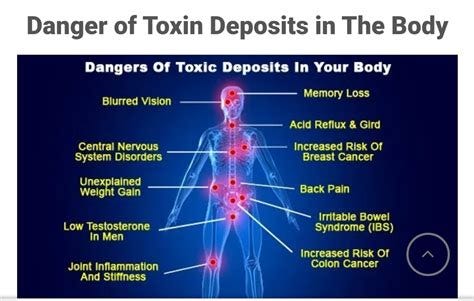What can be done about the general poisoning that affects most people in the Five Eyes countries? I first asked that question in public on September 9, 2022:
https://rayhorvaththesource.substack.com/p/how-do-the-perpetrators-protect-themselves
I called for further discussions in May, 2023, with hardly any results:
https://rayhorvaththesource.substack.com/p/call-for-discussing-potential-remedies
My last call invoked more comments:
https://rayhorvaththesource.substack.com/p/protection-from-5g-toxins-hydrogels
In the last few weeks, a couple of readers asked me if the nanotech, once in the body, can be magnetized or demagnetized. Ana Maria Mihalcea reported on EDTA Chelation only a few days ago:
Ana is calling her site “Humanity United Now,” which I consider wishful thinking, because humanity is united only in one way, everyone is a victim, including the perps. That, however, is obvious and goes well beyond semantics. It is feasible solutions that matter. The article promises a solution, albeit not exactly in a specific manner, so it’s good enough to raise hopes, but some explanations and specific instructions are sorely missing.
As soon as I learned about the nature of the self-assembling nanocomputers, I was wondering about magnetizing or demagnetizing, too, but haven’t encountered anything about either of the two in the last, nearly three, years.
For that matter, as Ana also reported, one doesn’t have to be injected to need some remedy, but as of today, I haven’t been able to identify anything that would clearly work. EDTA Chelation is clearly recommended for heavy metal poisoning1, and part of the problem is certainly heavy metals, but the poisoning is multilateral and multi-faceted:
https://rayhorvaththesource.substack.com/p/what-is-in-where-and-why
The nanotech exhibits magnetic characteristics, and I haven’t been able to find out why. Besides, it is remotely controlled through 5G or comparable technologies. Beyond that, once it anchors itself within the human body, it operates on bioelectricity. Once in that phase, I doubt that magnetizing or demagnatizing would do much, and it’s unclear what any of the two methods would do to the contents of the vials, because the ingredients are creatively versatile and often unknown, especially, when two or more technologies from different sources affect each other and establish new threats2 that are even more unknown, because not a single one of such threats has even been mentioned anywhere, and certainly not identified.
The challenge is there, but who knows what to do3?
Even in mainstraim “Medicine,” it is used for a large number of things and, unless I’m mistaken, it’s for symptoms, not for causes, as usual:
https://www.healthline.com/health/chelation-therapy
In Ana’s article, EDTA Chelation works for blood restoration, and Ana confirmed my suspicion a few months ago that most people’s red blood cells are damaged in the same way as the injections do the damage, so this might be the most important method that might actually work, at least to a certain extent.
Even allopathic “Medicine” cautions about the impact of combining its poisons, mistakenly called “medications”:
https://247wallst.com/special-report/2021/11/29/the-25-most-dangerous-drugs/
NAC and ivermectin are often mentioned, but I have serious reservations on any synthetic product these days. Some of my considerations are in
https://rayhorvaththesource.substack.com/p/further-considerations-about-ivermectin
Light and sound “therapy” have been definitely mentioned all over the place, but how can one treat something that has not been specifically identified?






Hi Ray,
I dont usually do this but am a bit tired. cut and pasted from one of my posts. Please check out the write up below by Dr Andrew Goldsworthy as his is the best explanation of the mechanism for the magnetism we see in people today. Regards, m
I have 2 pet bug bears. One is magnetic graphene , Graphene oxide, reduced graphene oxide or most other forms of graphene, with the exception of Magnetic graphene oxide (M.G.O.). This comes from personal experience experimenting and a lot of research into patents etc.
The discovery of mgo was first called fleeting magnetism. In these reasonably recent papers scientists found that they could induce magnetism but only for incredibly short periods of time.
More recently ( too recent and too late to give to everyone and certainly price prohibitive ) , they found ways to increase this. So when i see people in videos picking it up off the beach (iron sand ) or getting it from water or pills with magnets, then automatically label it graphene, I laugh.
Yes standard graphene is now cheap to produce but it is not true graphene as in a one atom thick , or one layer substance. I made that myself a couple of years ago to experiment with using sonication and chemicals.. More recently I bought lab quality reduced GO to experiment with . Even this only contains a portion of single layer structures, was $350 for one gram and has a range of 1 < 7 layers.
Graphene can be doped using various metals like Fe and like iron will stick to a magnet , but it is still not magnetic as most people understand the term. It certainly is not why people have become magnetic after being vakd. For a believable explanation / hypotheses by a credible professor, see below
If I could find magnetic graphene I would get some to play with.
I saw videos claiming that when rgo reached body temperature it became magnetic. Again this is not true even up to boiling temps, as I have witnessed by experimentation.
Many methods are like the super high pressure one in this link, not practical today except for amounts that you probably cant see with the naked eye.
https://journals.aps.org/prx/subjects?subject_area%5B%5D=magnetism
Finally, I found something that made sense to me specifically in relation to the magnetism in people being found today, below:
……..
Dr Andrew Goldsworthy.
But how could this have happened since neither graphene or graphene oxide are magnetic? The answer is that both graphene and graphene oxide, can conduct enough electricity across the cell membranes to magnetise nearby superparamagnetic particles such as ferritin and magnetite to cause a widespread magnetisation of people receiving the vaccine.
It's just as the iron core of an electromagnet becomes magnetised when an electric current is passed through the coil of wire wound around it.
To make this argument more quantitative; the electrical conductivity of graphene on the nano scale is two orders of magnitude greater than copper.
What does this mean for living cells?
The answer is that the transmembrane voltage gradient of living cells is of the order of ten million volts per metre (100 mV across a 10 nm membrane). This means that a transmembrane strand of graphene or graphene oxide (from the vaccine) could carry a huge electric current and be likely to magnetise any superparamagnetic materials such as ferritin or magnetite that may be close by.
This effect could spread like wildfire across the membrane as each magnetized particle magnetizes its neighbours and then to those of the next cell, so that the magnetic effect increases and ultimately, it could spread to all parts of the body via the bloodstream, starting with the blood cells themselves, including those white cells needed for our immune system, then the veins, then the heart, followed by the lungs and finally the brain.
Wherever It goes, it could wreak havoc with cell permeability and have all sorts of biological effects, including heart failure, premature Alzeimer's disease and, when the mitochondria are affected, chronic fatigue. Another effect is that membrane damage to our sensory cells could make them hyperactive and send false signals to the brain to give symptoms very similar to electromagnetic hypersensitivity (EHS) resulting in headaches whenever we use a mobile phone, pins and needles when straying too close to a WiFi router dizziness and nausea, to name but a few. Perhaps the most serious danger is if you have an MRI scan, when the extremely powerful magnet in the machine would try to pull these magnetised particles out of your body and, in the case of the brain or spinal cord scan, immediate and possibly permanent damage could result. When other parts of the body are scanned, the results may be less noticeable in the short term, but become apparent later as an unexplained "idiopathic" illness. This needs careful monitoring by an independent observer. Best wishes,
Dr Andrew Goldsworthy Lecturer and Biological Safety Officer (retired) Imperial College London
………………..
Now that my hypothesis of the agenda to graphenate the planet by way of graphene in jet fuel has been shown as very possible, i wondered about it in auto fuels. not quite but close as follows.
I found that to make graphene magnetic some researchers were making it using a fe (iron) / stainless nano , graphene composite mix to do so, while others were making carbon nanotubes from engine oil and making a composite with that and graphene.
The heat and pressure combined in a motor would also save a lot of $ in the cost to produce such effects if possible.
which led to the following:
Original Article
Published: 27 January 2022
Fuel energy saving in SI engine using graphene and graphite as nano-additivesː a comparative study
Gurtej Singh, M. F. Wani & M. Marouf Wani
Applied Nanoscience volume 12, pages1387–1401 (2022)Cite this article
166 Accesses
Metricsdetails
Abstract
This study comparatively investigates the influence of graphite nano-flakes (GNF) and graphene nano-platelets (GNP) additives on the performance characteristics of 4-stroke 3-cylinder gasoline engine (GE) viz., brake power (BP), mechanical efficiency (ME), engine torque (ET), brake specific fuel consumption (BSFC), and piston ring wear in engine oil grade SAE 15W40. The BP, ET, and ME of the engine using 0.1 wt.% GNP + SAE 15W40 and 0.1 wt.% GNF + SAE 15W40 enhanced by 3.7–4.8%, 3.1–6.3% and 2%; and by 1.8–3.8%, 2.3–5.2%, and 1.4% compared to virgin SAE 15W40, respectively. However, the BSFC and emissions were reduced by 1.7–3.8% and 2.0–4.0% for 0.1 wt. % GNP + SAE 15W40 and by 1.2–3.4% and 1–3% for 0.1 wt. % GNF + SAE 15W40, respectively. The 0.1 wt. % GNP dispersed SAE 15W40 showed improved performance of GE than 0.1 wt. % GNF dispersed SAE 15W40 and base oil SAE 15W40. Further, the piston ring wear was also evaluated and observed to decrease using 0.1 wt. % GNP/SAE 15W40. The formation of tribo-film on the wear track of the piston ring resulted in the reduction of abrasive wear and surface roughness, respectively.
I like OUTRAGED's definition of quantum dots, published in:
https://outraged.substack.com/p/stop-quantum-tagging
"QDs (Quantum Dots) are nanoscale semiconductor crystals typically between 10 and 100 atoms in diameter. Approximately 10,000 would fit across the diameter of a human hair. Their small size makes it possible for them to exhibit certain quantum mechanical properties. QDs emit either photons or electrons when excited. In the case of photons, the wavelength (color) of light emitted varies depending on the composition and size of the quantum dot. As such, the photonic emissions can be tuned by the creation of QDs of different types and/or sizes. Their unique properties as highly efficient, next generation semiconductors have led to the use of QDs in a range of electronic and other applications, in the display and lighting industries. "